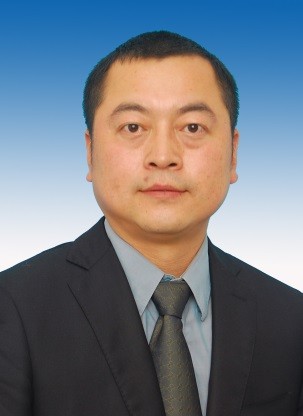Fei XUE1*, Zhengcao LI2, Chonghong ZHANG3, Tao ZHANG4
1. Suzhou Nuclear Power Research Institute; 2. Tshinghua University
3. Institute of Modern Physics, Chinese Academy of Sciences; 4. Northeastern University
Abstract: Aiming at the current situation of service behavior evaluation of key nuclear materials used in Reactor Pressure Vessel (RPV) and its welding components such as long time period, high cost, difficulty, etc, based on the material genome engineer method, the high throughput evaluation and prediction technologies are developed and applied in the life extension project of nuclear power plant.
In the aspect of high throughput calculation, based on the first principles molecular dynamics calculation of atomic configuration and force data at different temperatures, the grain boundary segregation and micro-crack growth on the atomic scale are studied. The phase field simulation method was used to simulate the new phase precipitation in the thermal aging process, and the potential difference and corrosion current between the precipitates are calculated by the first principles method, which is related to the corrosion probability of the material. The kinetic law of the transformation from local corrosion to crack initiation is obtained by the mesoscopic simulation methods such as cellular automata, and then the process of crack initiation, merging and propagation is simulated by the Monte Carlo method. The damage evolution from nano-scale and micro-scale damage defects to the initiation, initiation and development of stress corrosion cracking under the condition of stress-corrosion-thermal aging coupling is investigated by using multi-scale simulation method, It provides data support for the establishment of stress corrosion microcrack initiation and propagation behavior model and parameter selection, as well as the service behavior evaluation and life prediction of materials. For the first time, RPV model alloy potential is constructed based on machine learning method, and the neural network of machine learning is embedded into lamps program to carry out molecular dynamic simulation. By using the method of Python calling Lammps software, the high-throughput calculation of concurrent and automatic process defect determination for pure Fe and FeNi alloys is realized, which provided data support for the establishment of RPV material gene database.
In high throughput experiments, a high throughput experimental device for high-energy ion accelerator (HIRFL) radiation terminal was developed. A 352.8MeV 56Fe ion irradiate experiment is carried out base on that device. At that same surface of the same sample, the upper and low two samples with different radiation dose (the displacement damage levels in the low and high dose region are 0.12 dpa and 0.24 dpa, respectively) are obtained, then the irradiated samples is annealed in vacuum at 300 ℃, 350 ℃ and 400 ℃ for 30 minutes respectively. Finally, the properties and microstructure of RPV materials in 12 states are obtained based on a single high-energy ion irradiation experiment, which provided data support for the establishment of the mapping relationship between high-energy ion irradiation and neutron irradiation. At the same time, based on the multi-cross-section specimen technology of sectional dimension change, the SCC crack initiation high-throughput evaluation technology is established, and the uniaxial crack initiation test efficiency is increased by 2 times. The establishment of high throughput evaluation equipment and evaluation technology has broken through the technical bottleneck of obtaining the experimental data of SCC/environmental fatigue crack initiation and propagation rate.
In the aspect of database and machine learning, the gene database of nuclear power materials is constructed, and the algorithms, advantages and disadvantages of feature selection methods such as grey correlation analysis, sensitivity analysis, signal-to-noise ratio and entropy standard are analyzed, and the prediction equation of radiation embrittlement of RPV materials based on machine learning is developed. Taking the welded joint at the safe end of the RPV pipe as the research object, synthesizing the literature data of SCC/environmental fatigue crack initiation and propagation in the industry, calculating the simulation data and the experimental data, making full use of the information discovery and processing ability of machine learning, and developing the service life prediction technology of the key welded joints considering the effect of thermal aging.
Based on the study of the above three aspects, it will be beneficial to independently develop the high throughput evaluation and prediction of service behavior of RPV and its welding components materials, achieve the goal of high-efficiency and low-cost evaluation, and will be applied to the specific engineering practice such as RPV radiation embrittlement evaluation in the time-limited aging analysis of nuclear power plants in China.
Key Words: Reactor Pressure Vessel materials; Irradiation damage; Stress Corrosion Cracking;Life extension
核电关键材料服役行为的高通量评价与预测技术
薛飞1*, 李正操2, 张崇宏3, 张涛4
中国广核集团苏州热工研究院; 2. 清华大学; 3. 中国科学院近代物理研究所; 4. 东北大学
摘要:针对反应堆压力容器(RPV)及其焊接部件材料服役行为评价时间周期长、成本高、难度大等现状,借助材料基因工程方法,融合高通量计算-高通量实验-数据库技术,开发基于重离子辐照的RPV材料服役行为高通量评价与预测技术、应力腐蚀裂纹萌生和扩展全尺度演化规律的高通量实验与计算模拟技术并应用于核电站延寿工程实践。
在高通量计算方面,基于第一性原理分子动力学计算不同温度下原子构型及作用力数据,研究原子尺度上的晶界偏聚、微裂纹扩展规律。利用相场模拟方法模拟研究材料热老化过程中的新相析出,并用第一性原理方法计算材料析出相之间的电位差和腐蚀电流,将之与材料腐蚀概率相联系,通过元胞自动机等介观模拟方法获得局部腐蚀到裂纹萌生的转变过程的动力学规律,进而采用蒙特卡罗方法模拟裂纹萌生和合并、扩展等过程。通过多尺度模拟方法探讨应力-腐蚀-热时效多因素耦合条件下从材料纳微观尺度损伤缺陷到应力腐蚀裂纹的孕育、发生和发展全过程的损伤演化规律,为应力腐蚀微裂纹萌生和扩展行为模型的建立、参数选择、材料服役行为评价及寿命预测提供数据支持。首次采用基于机器学习方法构建RPV模型合金作用势,并将机器学习的神经网络嵌入到lammps程序中,开展分子动力学模拟研究。采用Python调用Lammps软件方法,实现了纯Fe和FeNi合金辐照损伤计算的并发式、自动流程缺陷判定的高通量计算,为RPV材料基因数据库的建立提供了数据支撑。
在高通量实验方面,开发了高能离子加速器(HIRFL)辐照终端高通量实验装置,基于该装置开展了国产RPV材料352.8MeV 56Fe离子辐照实验,实现了在同一块样品表面获得上下两个不同辐照剂量样品(低、高剂量区域位移损伤水平分别为0.12 dpa, 0.24 dpa),随后对辐照样品分别在300℃、350℃、400℃温度下进行真空退火30min,最终基于一次高能离子辐照实验获得了RPV材料12种状态下的性能与微结构数据,为高能离子辐照与中子辐照映射关系的建立提供了数据支撑。同时,基于截面尺寸分段变化的多截面试样技术,建立了SCC裂纹萌生高通量评价技术,使单轴裂纹萌生试验效率提高2倍。高通量评价装置及评价技术的建立突破了高效获取材料SCC/环境疲劳裂纹萌生和扩展速率实验数据的技术瓶颈。
在数据库和机器学习方面:构建了核电材料基因数据库,开展了灰关联分析、灵敏度分析、信噪比、熵标准等特征选择方法的算法及优缺点分析,并开展了基于机器学习RPV材料辐照脆化预测方程的开发工作。以RPV接管安全端焊接接头等为研究对象,综合业界SCC/环境疲劳裂纹萌生和扩展的文献资料数据、计算模拟数据和实验数据,充分利用机器学习的信息发现和处理能力,发展考虑热时效作用的关键焊接接头服役寿命预测技术。
通过以上三方面的研究,将有利于自主开发RPV及其关键焊接部件材料服役行为高通量评价与预测技术,达成评价的高效低成本目标,并将应用于我国核电站时限老化分析工作中的RPV辐照脆化评估与裂纹扩展分析具体工程实践中。
关键词:反应堆压力容器(RPV)材料;辐照损伤;应力腐蚀开裂;延寿

中国广核集团苏州热工研究院寿命管理技术中心主任、博士、研高。主要从事电厂老化与寿命管理工作,牵头建立了符合我国国情的核电站老化与寿命管理标准体系,并负责编制相关标准若干项;在核电材料老化机理研究、失效分析及寿命预测模型开发等方面发表SCI/EI 论文 40 余篇。
Email: xuefei@cgnpc.com.cn